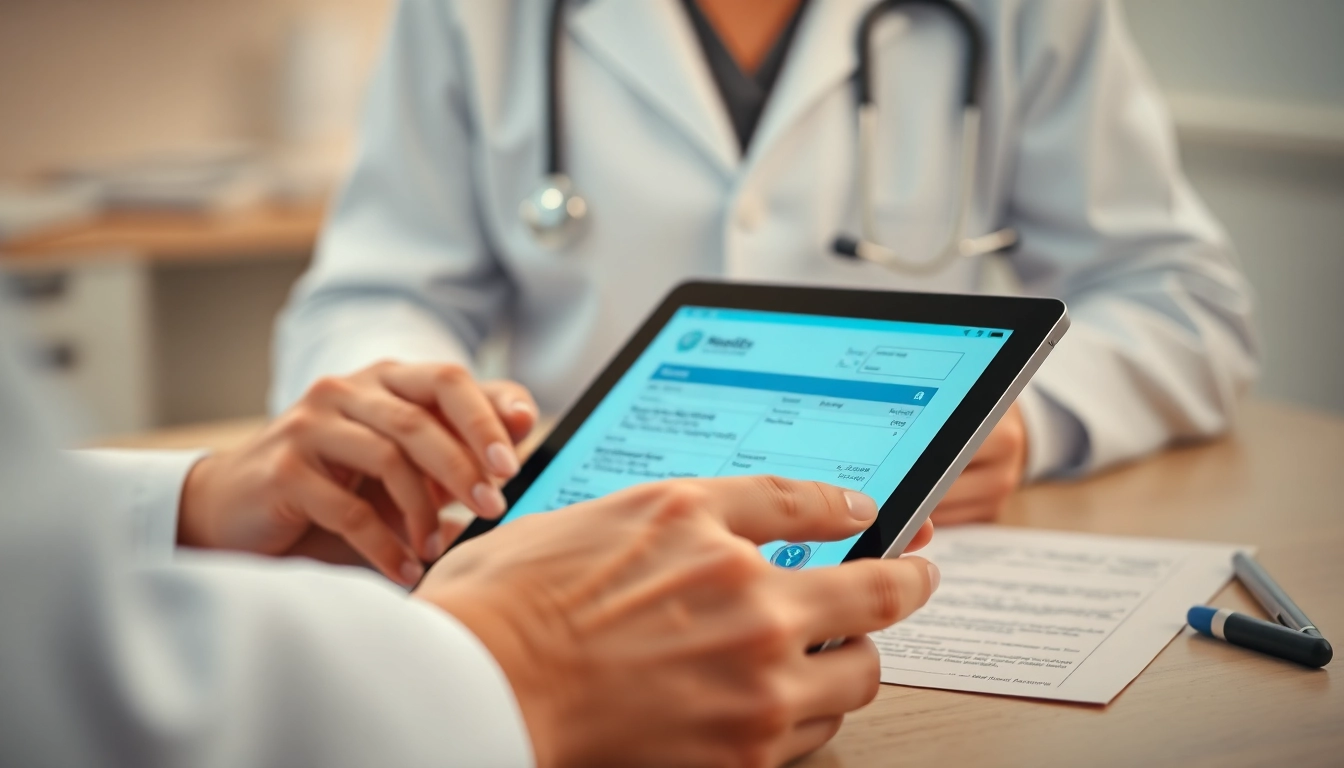Innovative Approaches to ePrescription App Development for Healthcare Enhancement
Understanding ePrescription App Development
In the healthcare landscape, technology continues to make significant strides toward improving patient care and operational efficiency. One of the most impactful advancements is the emergence of electronic prescriptions, commonly known as ePrescriptions. These digital solutions streamline the process of managing prescriptions, reduce human error, and enhance patient safety. Understanding the nuances of eprescription app development is vital for any healthcare provider looking to implement this transformative tool.
What is ePrescription?
ePrescription refers to the electronic creation, transmission, and management of prescriptions between healthcare providers and pharmacies. Unlike traditional paper prescriptions, ePrescriptions allow healthcare professionals to send medication orders directly to pharmacies via a secure digital network. This process minimizes paperwork, reduces the risk of medication errors, and allows for better tracking of a patient’s medication history.
Key Benefits of ePrescription
The advantages of adopting an ePrescription system are both extensive and significant:
- Enhanced Patient Safety: ePrescriptions minimize the risks of illegible handwriting or transcription errors, ensuring that patients receive the correct medications and dosages.
- Improved Workflow Efficiency: Healthcare providers can save time on phone calls and faxes, leading to faster patient care and streamlined operations.
- Medication Reconciliation: ePrescription systems often include features that alert providers to potential medication interactions based on a patient’s history, improving safety outcomes.
- Cost Savings: Both healthcare providers and patients can benefit from reduced costs associated with managing prescriptions, including fewer medication-related complications and hospitalizations.
Overview of the Development Process
The development of an ePrescription app involves several critical stages, from ideation to launch. Below are key phases of this process:
- Research and Planning: Understand the market landscape, user needs, and regulatory requirements. This step sets the foundation for a successful application.
- Design and Prototyping: Create wireframes and prototypes to visualize the application interface and user experience. User feedback is invaluable during this phase.
- Development: Utilize agile methodologies to develop the app. This includes back-end and front-end development while ensuring compliance with health regulations.
- Testing: Conduct thorough testing, including usability, functionality, and security testing to ensure a smooth user experience.
- Launch and Deployment: Roll out the application to users, ensuring support and feedback mechanisms are in place to address any initial challenges.
Essential Features for ePrescription Apps
Real-Time Prescription Management
Real-time prescription management is a cornerstone feature of any ePrescription application. It allows healthcare providers to create, send, and modify prescriptions instantly. This feature ensures that updates are transmitted immediately, reducing the time between a doctor’s appointment and medication dispensing, which is crucial for patient satisfaction and adherence to treatments.
User Authentication and Security Measures
Given the sensitive nature of health information, robust user authentication and security measures are imperative for ePrescription apps. Developers should implement multi-factor authentication, encryption protocols, and adherence to healthcare regulations such as HIPAA to protect patient data.
Integration with Pharmacy Systems
The ability to integrate seamlessly with various pharmacy systems is vital for an ePrescription app. This integration allows for automated prescription fulfillment and updates across multiple platforms, ensuring that patients and healthcare providers have access to real-time data regarding prescriptions and medication availability.
Choosing the Right Technology Stack for ePrescription App Development
Mobile vs. Web Platforms
When developing an ePrescription application, deciding between mobile and web platforms is crucial. Mobile apps offer greater accessibility, allowing for prescriptions to be managed on the go, while web applications may provide a richer set of features due to fewer limitations in processing power and storage.
Frameworks and Libraries for Development
The choice of frameworks and libraries will significantly influence the development process. Popular options include:
- React Native: Ideal for building cross-platform mobile applications.
- Angular: Suitable for web-based applications requiring dynamic content updates.
- Django: A robust framework for building secure and scalable back-end systems.
Data Storage and Management Solutions
Data storage is another critical consideration for ePrescription apps. Solutions should support secure and compliant storage of sensitive health data. Options like cloud storage solutions (AWS, Google Cloud) or on-premise databases must be evaluated based on scalability, security, and cost.
Design Best Practices for ePrescription Apps
User Experience Focus in Design
Creating a user experience that prioritizes usability is essential for any ePrescription app. Clear navigation, intuitive interfaces, and straightforward processes contribute significantly to user satisfaction. Engaging with users during the design phase can uncover pain points and areas for improvement, ensuring a more user-centered design.
Accessibility Considerations
Accessibility in ePrescription app design ensures that individuals with disabilities can effectively use the application. Adhering to Web Content Accessibility Guidelines (WCAG) and including features like voice commands and screen reader compatibility will broaden your user base significantly.
Visual Design Trends in Healthcare Apps
Keeping abreast of visual design trends can elevate the functionality and appeal of an ePrescription app. Trends include minimalistic design, the use of calming color palettes, and an emphasis on readability, which can enhance user engagement and retention.
Measuring Success and Improvements in ePrescription Apps
Key Performance Indicators for Developers
To evaluate the effectiveness of an ePrescription application, developers should monitor key performance indicators (KPIs). Metrics include:
- User adoption rates
- Prescription error rates
- Time taken to fill prescriptions
- User satisfaction scores
Gathering User Feedback Effectively
Feedback is essential for continuous improvement. Implementing mechanisms such as in-app surveys, focus groups, or usability testing sessions can provide invaluable insights into user experience and functionality.
Continuous Improvement Strategies
After launch, the development process does not end. Continuous improvement strategies should focus on iterative updates based on user feedback and technological advancements. Regularly monitoring system performance and user engagement will help in proactively addressing issues and enhancing overall functionality.














Post Comment